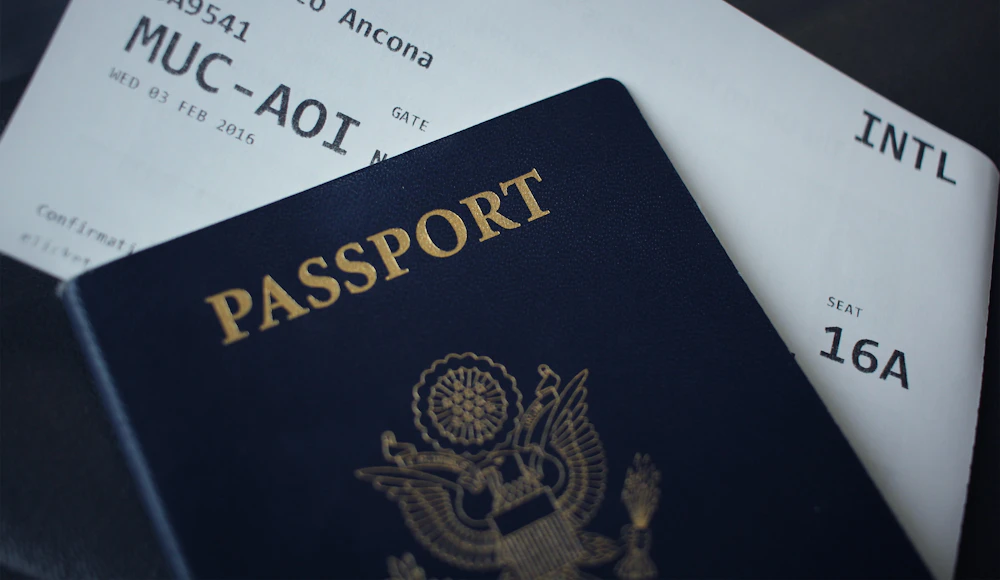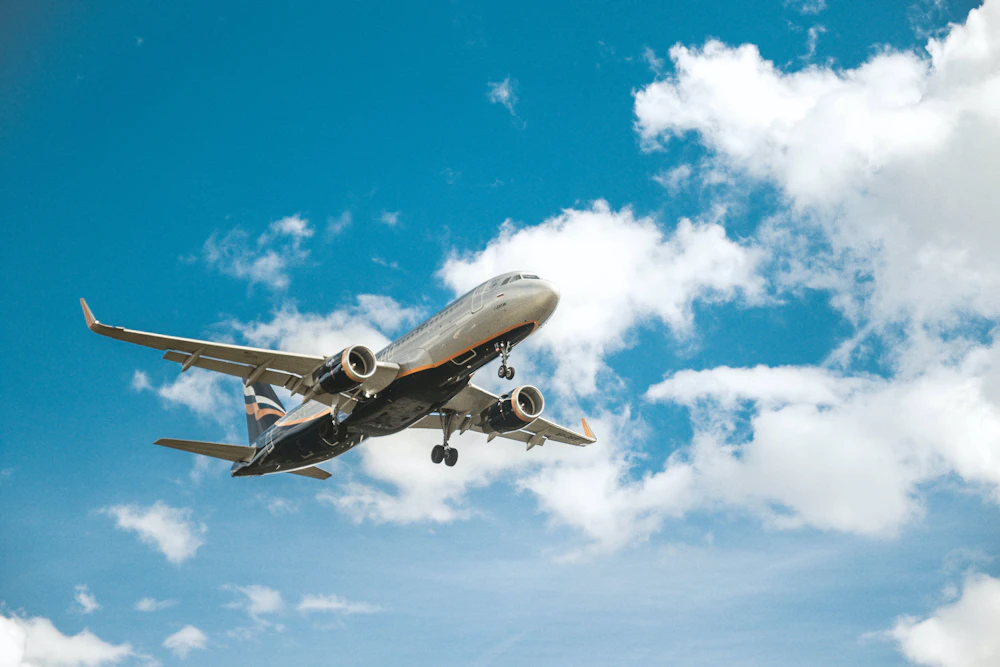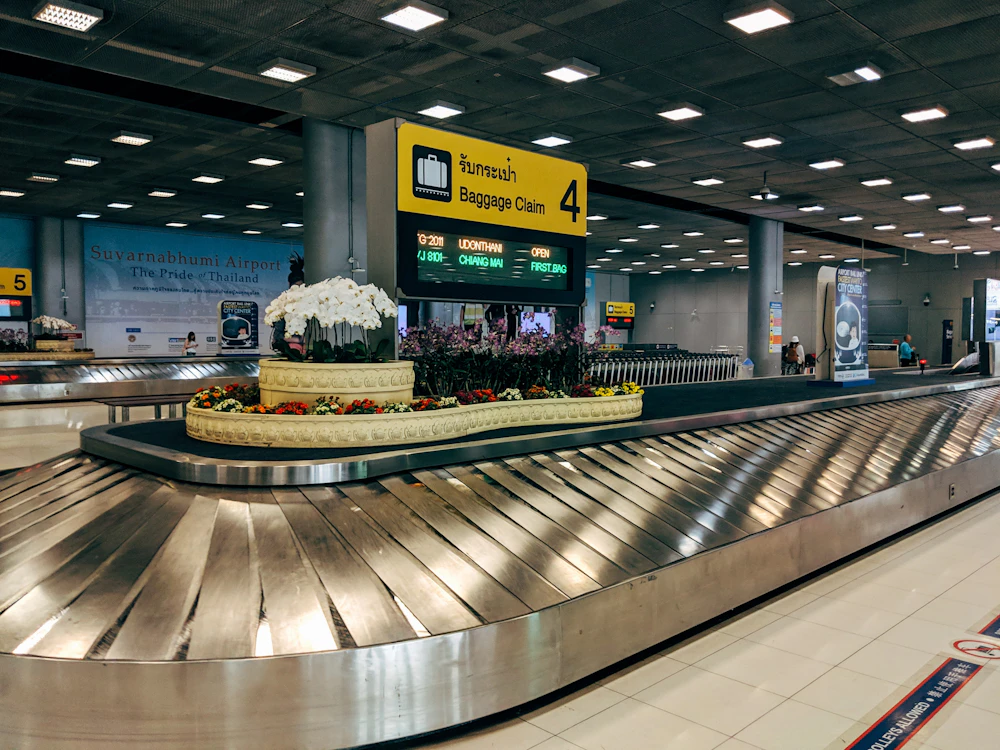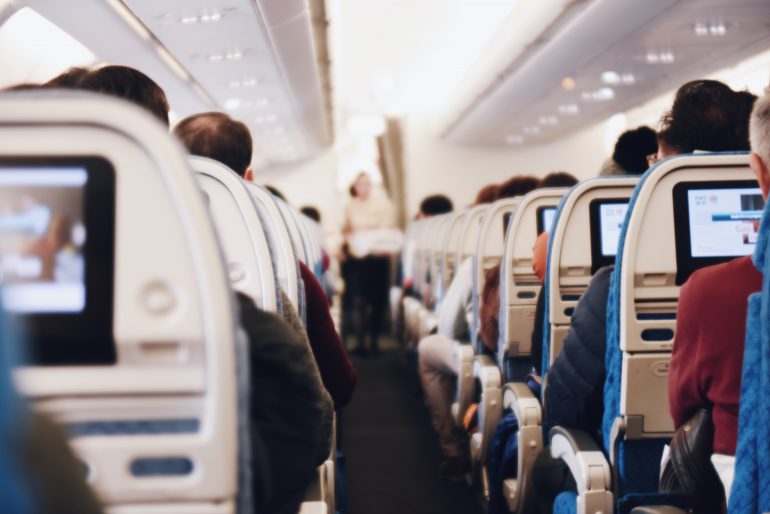To say that we'll miss express check-in is an understatement.
The travel industry has taken a hefty toll due to the COVID-19 pandemic - airlines have gone out of business, countries have closed borders, and many companies in travel and hospitality have seen a nosedive in sales. However, travel is slowly gaining momentum in different parts of the world and though infrared thermometer screenings and stringent TSA procedures are becoming the new normal, air travel is quickly adapting for the increased safety of travelers. The air travel industry was the biggest gateways for worldwide outbreak, so it is only normal that health officials are grappling with new ways to ensure safety protocols and quarantine regulations, or verify health records before and after stepping into a plane.
Here's your complete guide to flying in the post COVID world. From things to be wary of while booking tickets all the way till touchdown, here's all that's changed for the better (or worse).
Before You Reach The Airport

Flight fares will skyrocket
With flights now having to operate with only one-third occupancy to ensure maximum social distancing between on-board passengers, airlines will be forced to raise fares by anywhere between 1.5 to 3 times. The seating capacity of a 180-seater single aisle (six seats across 30 rows) will, therefore, fall by two-thirds to 60 (two persons on each row of six seats across 30 rows). Unless it's essential travel, flying in the near future can be an expensive affair.
Limited flying options
As per the trend in most countries, domestic flights are faciliated first and international scheduled flights in later phases. Some countries are allowing internation flights at 30% capacity to facilitate social distancing. Flight operations to its original level are likely to be scaled up in a gradual manner over a few months. If you're living in a country where a lockdown is still prevalant, domestic travel is your first option and international travel maybe allowed only few months down the line.
Learn more about the currently operational travel bubbles around the world
Missing middle seats
Seat selection is typically part of the reservations process, but with onboard social distancing, some airlines process the final seating chart to ensure optimal distance between passengers. In order to facilitate social distancing on-board, middle seats are being left empty. However, use of middle seats will probably be phased in slowly, once passengers are comfortable being on planes again. That again depends on whether airlines are able to sell out middle seats. From a business standpoint, this process is not likely to last and choosing seats will be a part of the fare booking process in the long term.
Disclosure of Health Information & Self-Reporting Forms
Alongside the usual details, you may now need to submit a health certificate and COVID test results before being booked on a flight. This could be at the booking stage or once you arrive at the airport, but it's always safer to disclose this while booking tickets. Some airines mandate it that way, while others give you the form at the airport before checking.
No more carry on bags & single checked-in bag
Large carry-on suitcases may not be permitted onboard planes. Smaller carry-on items like laptops, handbags, briefcases, and baby items will still be allowed. Some airlines in India are not allowing carry ons at all and a single checked-in baggage only. Note, these measures are mostly restricted to the first few phases of travel reopening and is not a long term measure.
Check out our post COVID packing checklist before you zip your bags.
At The Airport

Masks, Face Gear and Gloves Recommended
Ensure your mask is well-fitting and that you have your gloves on at all points. Bring multiple sets of gloves and masks as you may be asked to change them before you board and deplane. For those who'd like to be extra cautious, PPE suits, shoe covers and face gear are recommended.
Online Check-Ins
In a bid to avoid as much contact as possible, all check-ins will now be web-based. While entering the airport, you'll have to show a confirmed web check in on your phone.
Social distancing markings
Expect floor-marked passenger points in the terminal to ensure a minimum space between passengers. Most airports will also appoint queue managers to ensure six feet distance between travellers.
Heightened Health Screenings
Emirates Airlines has begun administering COVID-19 blood tests on potential passengers before they’re allowed to board planes (results take 10 minutes).Solutions that use artificial intelligence to augment contemporary thermal scanning technologies will be a common sight in airport soon. The extent of these checks can vary by airport or country.
“Sanitagging” of Luggage
With the growing concern of invisible viruses, “Sanitagged” which essentially means sanitising bags and tagging them once they have been sanitised is quickly gaining popularity. A typical sanitagging process will involve the bags to first go through fogging or UV disinfection process at the entrance of the baggage conveyor systems. It will be then be marked to indicate they’ve been sanitised. This provides a sense of security for all passengers and employees across airports and airlines. Then bags are marked to indicate they’ve been sanitised.To know more about sanitagging of bags, head here.
Retail Outlets & Lounges
As people become more cautious about browsing at the airport, time spent at duty-free stores are expected to drastically decrease. Online browsing of duty-free products and pick up kiosks are likely to sprout to combat this. As for lounges, people will want to avoid crowded spaces once airports start functioning and would prefer waiting for their flights in more secluded areas. Lounges can start charging a premium with more sanitized and secluded facilities to address this passenger concern.
Contactless Boarding
Like ‘bingo boarding’, you'll have your name called individually when it is time to board, in order to avoid crowding around the gate. Needless to say, e-boarding passes will become more widely adopted.
Sign up for our monthly newsletter
Your dose of travel fix - from hacks and deals to travel tips and everything in between, delivered monthly to your inbox
In Flight Safety

In-flight janitors
The role of in-flight janitor will be to keep places like lavatories and other hi-touch areas clean, fog the cabin and serve as a visual reminder of a sanitized in-flight experience.
No more magazines
Sadly, this pandemic may lead to no more in-flight reading material in order to reduce changes of spreading the virus. A study from Marketplace which analysed over 100 samples on 18 flights in 2018 revealed that the seat-back pocket is the second most contaminated area in the cabin, only topped by the headrest. It is therefore of no surprise that we can expect empty seat-back pockets henceforth. It is likely that all the in-flight content snacking with now be available digitally through the airline app.
Bring Your Own Device (BYOD)
It does not take much imagination to understand why a touchscreen TV that will be touched by multiple passengers could pose a threat in this day and age. With the increasing number of airlines becoming WiFi enabled, the adoption of BYOD (Bring Your Own Device) style entertainment is in the horizon. In fact, airlines can save a lot of money on the installation of IFE systems, which are not only very costly and install but the additional weight they add to the aircraft also comes with a substantial fuel bill.
Dining in the Sky
Pre-packed is the new sky dine fad. All food items will be individually wrapped in plastic and you'll have personal bottles of water (amen to all that plastic usage). In short, packaging and presentation will be modified to reduce contact during meal service and minimize the risk of interaction. Passengers are also now allowed to bring their own food, however, we recommend not eating on short flights because that involves lowering your mask and putting yourself at risk.
After Touchdown

Santize thoroughly
After touchdown, once you're out of the airport, make sure to santize yourself and all your belongings, along with your checked-in baggage thoroughly. Avoid using trolleys if possible.
Safe taxis
Opt for private modes of transport to take you to your home/hotel. Buses, trains, metros and other public modes of transport are high risk mediums. In taxis, choose to sit behind and ensure minimal contact with the handles and doors.
Tips For Flying Safe In The Post COVID-19 Era
- Bring hand wipes to disinfect surfaces such as your seat belt and your personal belongings, like your passport. If soap and water are not available to clean your hands, use a hand sanitizer which is at least 60% alcohol.
- Avoid touching your own eyes, nose and mouth with unwashed hands, as viruses most frequently enter the body through these routes. COVID-19 spreads primarily through droplets of saliva or mucus, usually when people cough or sneeze.
- While most modern aircrafts have HEPA (High Efficiency Particle Arrester) filters that will filter 99.999% of dust particles and airborne contaminants, infection specialists suggest a window seat, away from passenger foot traffic, could offer you a bit more protection.
- Now would be a good time to upgrade to business or first class travel as it gives you a small buffer of extra personal space and potentially less contact with other passengers
- If traveling internationally, make sure to check the government website for the latest information and advice.
- Invest in a travel insurance that covers for pandemics, epidemics and flight travel.
Frequently Asked Questions About Flying Post Coronavirus
People sitting on the aisle are more likely to be in contact with other passengers and crew members as they walk down the aisle or take something out of the overhead bins. Since most middle seats are being left empty, that leaves you with the window seats which are considered the safest of the lot by infection experts.
Most aircrafts use high-efficiency particulate air (HEPA) filtration systems. They can theoretically remove at least 99.97% of dust, pollen, mold, bacteria and any airborne particles with a size of 0.3 microns. However, they can't kill the germs that land on you from another passenger's sneeze.
Pull your mask closer or try and change your seat. There's not much you do when you're stuck in the sky.
Yes. Air travel requires spending time in security lines and airport terminals, which can bring you in close contact with other people and frequently touched surfaces.
Frequent sanitization, online check-ins, automated baggage drops, in-plane social distancing and stringent use of masks
Like it? Pin it!




